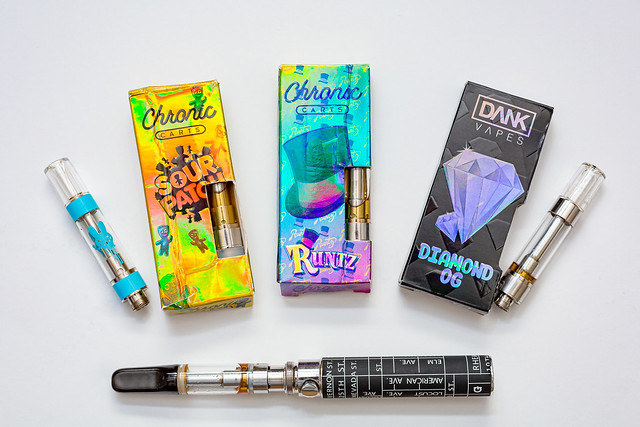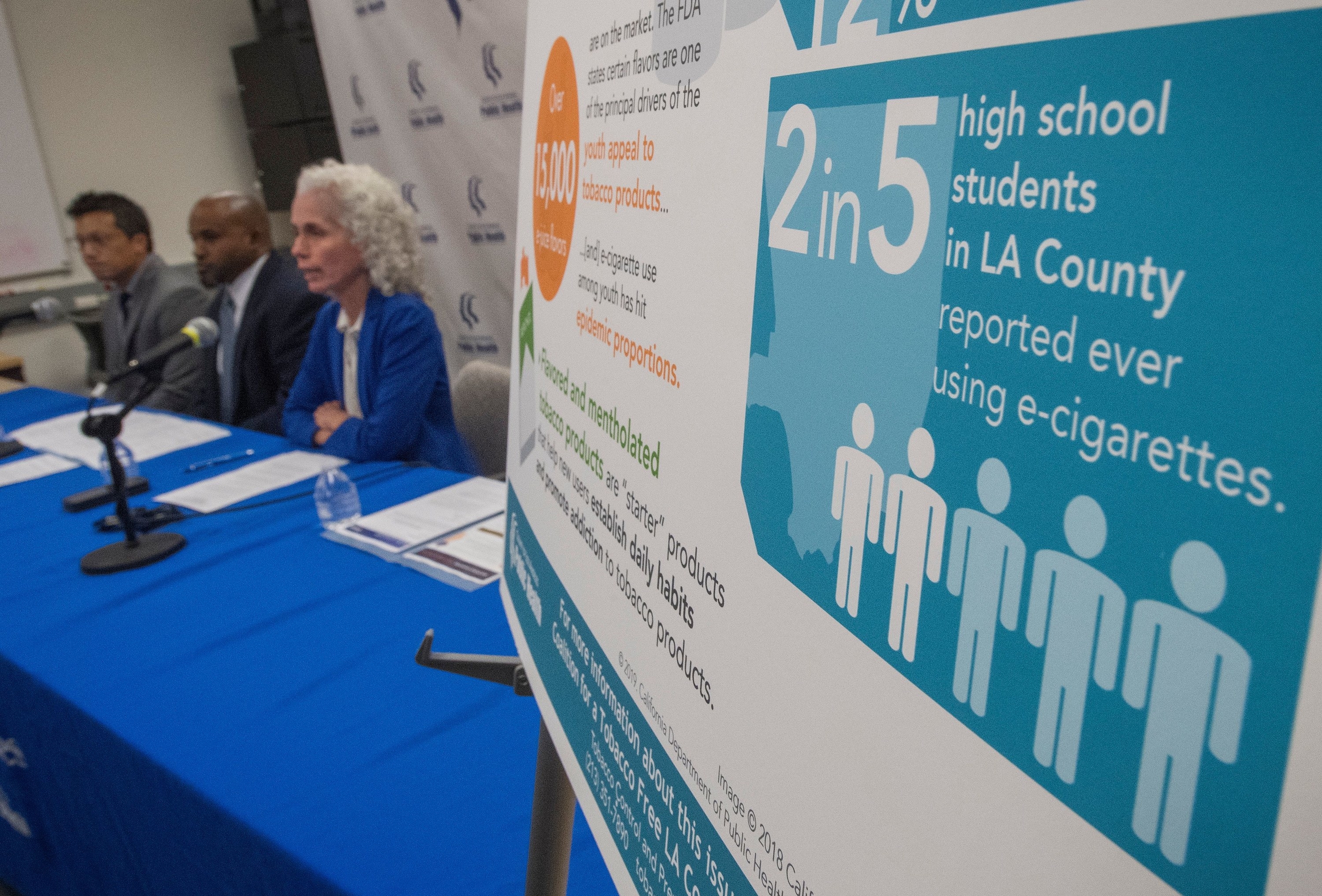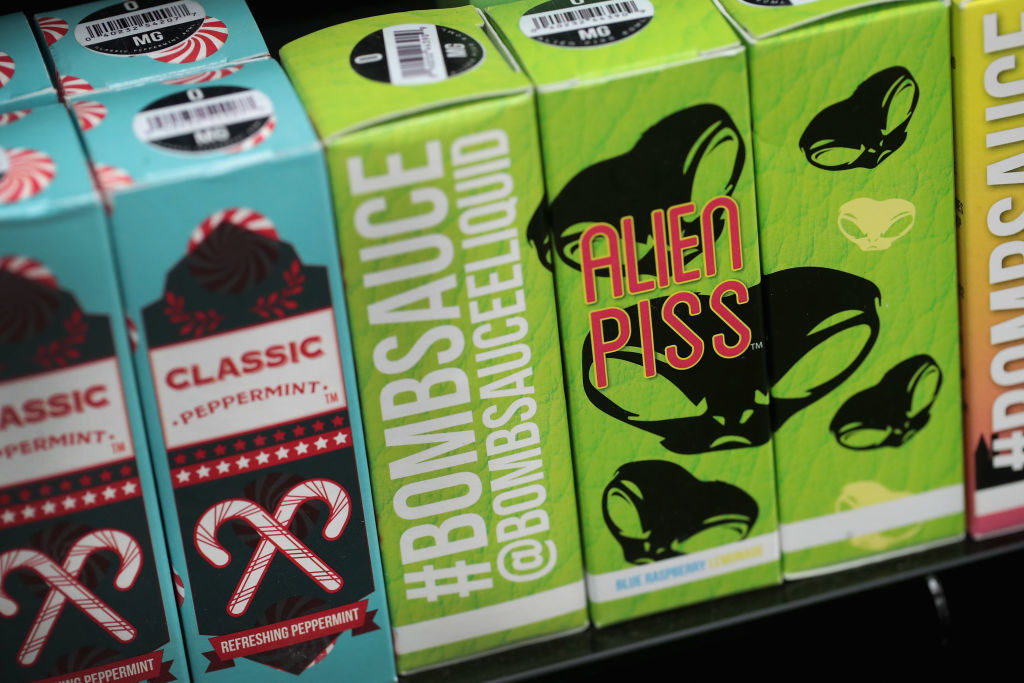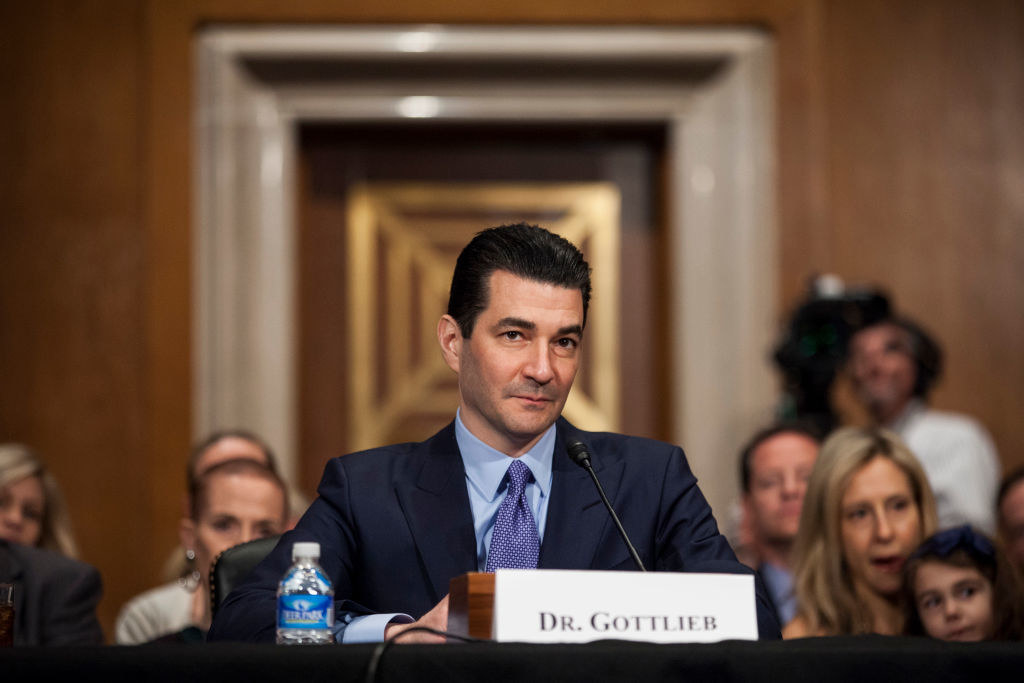
What’s causing the explosion in dangerous and deadly lung illnesses among vapers nationwide?
While health officials hunt for answers, one leading theory points to a bad ingredient in vaping liquids, perhaps Vitamin E, sold on the street. But some physicians suspect the epidemic has always been there, unnoticed until now. And for others, the culprit might be the online world of dubious home-brew recipes for getting a better high while vaping.
“Vaping” is shorthand for inhaling vaporized liquid, usually a mixture of nicotine and oil heated by a battery-powered atomizer in an e-cigarette or larger vaporizer. E-cigarettes have been sold in the US since 2007, with more than 9 million people using them on a regular basis, according to the CDC. More than 3.6 million teens vape, according to the FDA, turning the purpose of a device originally intended to wean smokers off tobacco on its head by making kids dependent on nicotine.
On Friday, federal health officials announced the number of possible severe lung illness cases tied to vaping liquids had more than doubled to encompass more than 450 people in 33 states and the Virgin Islands. The outbreak is characterized by severe pneumonia symptoms, shortness of breath, coughing, fever, fatigue, and respiratory failure — sometimes severe enough to require artificial respiration — and has so far affected mostly young people. The reports all started from a handful of cases in two states, Wisconsin and Illinois, announced at the end of July. Five people have died.
“While this investigation is ongoing, people should consider not using e-cigarette products,” the CDC’s Dana Meaney-Delman, said at a Friday briefing on the outbreak.
As the case numbers zoomed up, the medical mystery behind the epidemic has deepened, with epidemiologists and doctors asking for patience. Unlike more recent outbreaks tied to bad lettuce or the influenza bug, the experts are starting from square one, said Mitch Zeller of the FDA's Center for Tobacco Products, at that same briefing, with state and federal health officials only last week agreeing on criteria to screen confirmed cases from possible ones, while analyzing liquids and devices handed in by patients.
“We now have over 120 samples for testing,” Zeller added. “The FDA laboratory is analyzing these samples for the presence of a broad range of chemicals,” he said, including nicotine, THC (the ingredient in marijuana that gets you high), and other cannabinoids found in marijuana, as well cutting agents, additives, pesticides, opioids, and toxins.
Patients with lung injuries used a wide variety of devices, including both vaporizers, large-ish gadgets with a refillable liquid reservoir, smaller e-cigarettes that vaporize nicotine liquid from cartridges, and a wide variety of brands of liquids and cartridges. Around 80% reported they used vaping liquids that contained THC, the central clue in the case, with investigators hinting that the chemical was likely involved in all of the cases.
“This is closer to old-fashioned epidemiology, a little like the Brits figuring out what caused cholera in London, more than a century ago, rather than your usual investigation,” pulmonary and critical care physician Sean Callahan, of the University of Utah, who was on a team that reported on six cases in his state, told BuzzFeed News. “It’s not like we can say Product X is causing this.”
Until then, a number of theories have emerged over what is responsible for the outbreak. Here are some of the most notable.
Bad Ingredients

On Thursday, the New York State health department announced that Vitamin E acetate, an oily chemical found in some foods and lotion, was “now a key focus” of its investigation into the 34 cases in its state, after it turned up in at least one vape product inhaled by each patient.
The FDA’s Zeller pushed back against that conclusion a day later, suggesting that multiple chemicals found in vaping liquids were under investigation. But red herring or not, the finding solidified the leading theory about what is going on: A culprit chemical added to THC-containing vaping liquids that triggers an inflammatory response in the lungs, leading to scarring and other symptoms.
The first explanation offered was that the vaping mixtures were off, containing too much propylene glycol or glycerol oils that vaping flavors or ingredients are suspended in, or else burning it at too high a temperature. That could cause “lipoid pneumonia” where fat particles bombard the lungs and trigger inflammation, an ailment typically seen in elderly patients who inhale petroleum jelly or mineral oils to deal with raspy throats.
“I suspect that a purveyor of marijuana oil for vaping used too much oil or an especially dangerous type of oil,” Robert Jackler of the Stanford University School of Medicine told BuzzFeed News. A 2018 British Medical Journal report described just such a case, for example, from a young woman vaper where the “only source of lipid was the vegetable glycerine found in (an) e-cigarette.”
However, with Vitamin E and other suspect chemicals, an element of suspicion is turning to some extra chemical that is more recently being added to THC-containing vaping liquids, perhaps to enhance its flavor or burning. “These cases respond well to steroids which suggests there is some irritant in the lung causing inflammation,” Callahan said. His team documented fat deposits in the lungs of patients in a recent New England Journal of Medicine report, but he views that as more likely a remnant of damaged lung cells than excess oil from the vape juice.
There is some suspicion about the “thickeners” added to vaping liquids, Nick Kovacevich, CEO of KushCo Holdings, the largest US seller of vaping products and accessories (but not vaping liquids), told BuzzFeed News. Thickeners make vaping liquids more viscous, preventing oversaturation of a vaporizer’s combustion chamber. Typically in THC vaping liquids, they are loaded with the terpenes that give marijuana its taste.
A culprit thickener, or other additive, might explain why both e-cigarettes, which have legal cartridges that typically carry nicotine, and vaporizers are linked to the 450 people with lung illness, said Kovacevich. “With black market cartridges, or counterfeit cartridges — we see a lot of those — the ingredients are not known.”
In North Carolina, a report of five patients with the lung syndrome points to this possibility, said Daniel Fox of WakeMed Hospital in Raleigh, where all the patients used illegal THC liquids or e-cigarette cartridges before falling ill. “I think the take-home messages here for the public is that vaping cartridges, particularly those vaping cartridges that may not be, that may have been purchased off the street or, where the substances in them are not entirely clear, we do not believe are safe,” said Fox.
Vitamin E acetate remains just one possibility for now, toxicologist Sven-Eric Jordt of the Duke University School of Medicine, who has studied dangerous chemicals in vaping aerosols, told BuzzFeed News by email. “If inhaled at sufficient amounts, it could certainly cause respiratory problems, maybe even lipoid pneumonia,” he said. “It is an antioxidant, and may burn and disintegrate when heated in an e-cigarette, releasing toxicants.”
Since Vitamin E is also present in cannabis leaves and might also be found in cannabis oils, it is a natural flavoring to add to THC liquids.
Not A New Epidemic

The 2018 United Kingdom case of lipoid pneumonia, and a decade of warnings about ingredients in vaping liquids from public health officials (the FDA has even issued warnings about battery explosions), has caused some experts to ponder whether the current outbreak is just the surfacing of a long-running epidemic.
"It’s possible that the reported cases could have been occurring before this investigation was even initiated," CDC smoking and health official Brian King said at a briefing in August.
Even pediatricians might have missed the signs because e-cigarettes are such a new product, Susan Walley of the University of Alabama at Birmingham, chair of the American Academy of Pediatrics tobacco control section, told BuzzFeed News.
“Are you vaping or use e-cigarettes,” she recalls asking one patient recently, a young woman who acknowledged alcohol and tobacco use.
“Oh, no,” the patient replied.
Walley thought about it a second.
“Do you Juul,” she asked the patient, referring to the leading seller of e-cigarettes.
“Oh yeah, sure I Juul,” said the young woman.
Even doctors who run down a checklist and ask about e-cigarettes might miss a case by not asking about it the right way, she suggested. If that is right, the current outbreak only came to light because a cluster of cases turned up in Wisconsin and Illinois at the same time in July, jolting health departments into awareness of the problem. The first case in Illinois dates back to April, according to Jennifer Layden, state epidemiologist with the Illinois Department of Public Health.
However Callahan, the critical care specialist in Utah, doubts that doctors just missed the outbreak before.
“You have a lot of otherwise healthy young people suddenly arriving with fast-developing pneumonia in emergency rooms — that will raise red flags in a hurry,” he said. “This is new.”
The Internet

Another explanation for the far-flung, everywhere from California to Connecticut, cases of vaping lung illness is the plethora of YouTube videos and Internet search results (BuzzFeed News does not advise using any of these recipes) telling people how to cook up their own THC liquids in their kitchens for vaping, far from any clean room conditions.
Some of the videos have more than a million views. “They may have followed the same home brew recipe,” Jackler suggested, with kitchen brewers adding the culprit ingredient to vape juice used by otherwise unconnected vapers everywhere.
“In the midst of an epidemic related to unregulated e-cigarette use, it is deeply troubling that there are online sources showing youth how to make their own chemical cocktails,” said an American Lung Association statement sent to BuzzFeed News by the organization’s national communications director Allison MacMunn. “The inhalation of harmful chemicals found in e-cigarettes can cause irreversible lung damage and lung disease.”
Against that, New York State released images of products implicated in its investigation that come from vaping shops or gas stations, not from kitchen tea kettles. There is the possibility that those products have been refilled with home brews, however.
Chinese Tariffs

One explanation for the onset of the vaping illness outbreak this year is the Trump administration’s April imposition of 25% tariffs on goods from China, suggested vape device importer KushCo’s Kovacevich, echoing a complaint made by his industry about the ongoing trade war for more than a year. That’s because China is where most vaporizers, cartridges, and other e-cigarette parts are made.
The economics are simple, he said, when a premium e-cigarette cartridge suddenly costs $2.50, but a cheap one that might expose users to shoddier material in the body of devices and uneven combustion temperatures only costs $1.25. “People will go with what is cheaper if the price difference is suddenly a lot bigger.”
With an added tariff, it’s possible that vapers have turned to more dubious home brews and less safe devices, he suggested. “The labs we use are inspected and use best manufacturing processes,” he said. “We are competing with chop shop factories in China knocking off branded counterfeits that say XYZ company on the package but are not really affiliated, and who knows what they are getting.”
Slow Regulation

Incredibly enough, the outbreak has put Kovacevich, the head of a company that imports cartridges, on the same side as the American Academy of Pediatrics when it comes to regulating vaping: They both want it.
The FDA is entitled to regulate e-cigarettes but to much criticism has pushed back its review of rules until 2022. In the meantime, hundreds of flavored and THC-infused vapors have gone on sale in wild west conditions, unregulated, as teen vaping has mushroomed. Kovacevich said his company is paying for products made in labs that conform to best manufacturing processes and could readily be inspected, if safety regulations were put in place. “It would level the playing field, to some extent, to have everyone playing by the same rules,” he said.
In the meantime, Michigan’s governor only last week banned the sale of flavored e-cigarettes in her state in response to teen vaping, and after its health department announced six cases of lung illness. The legal US age for e-cigarette use is 18, and Walley and others complain that with 1 in 5 teens now vaping, those rules are being flouted, with kids ending up hooked on nicotine, which changes adolescent brain development.
“The first thing we need to do is solve this health crisis,” said Walley. “The next thing is we have to regulate e-cigarettes. We are seeing young people using e-cigarettes on a daily basis, and many do not realize it is dangerous.”
